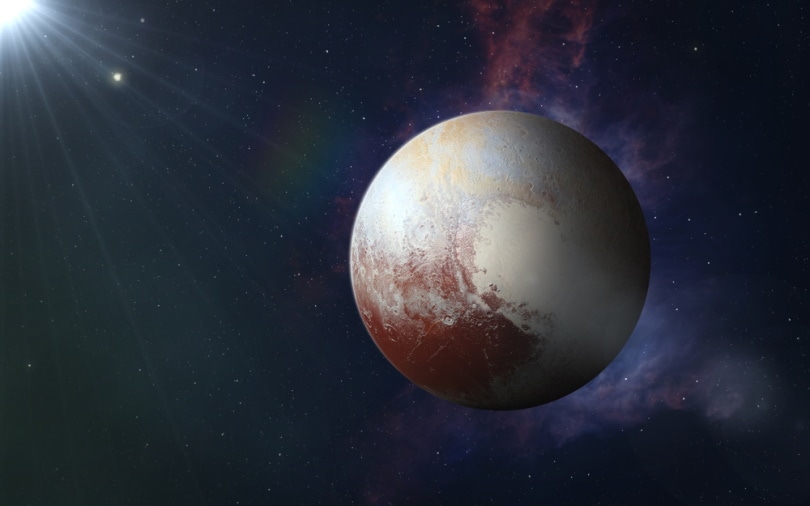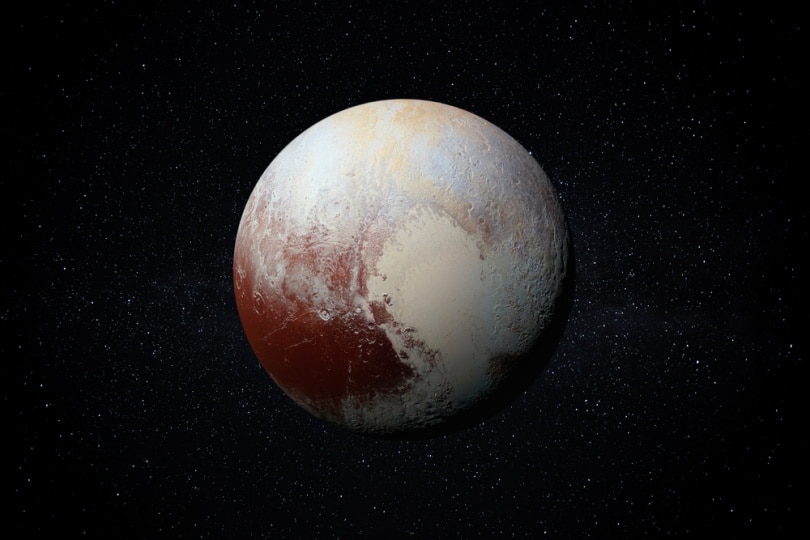When Was Pluto Discovered? History of Pluto
Last Updated on

Pluto was discovered by scientist Clyde Tombaugh in 1930 at the Lowell Observatory. Tombaugh discovered Pluto based on predictions made by astronomers such as Lowell. Although Pluto was discovered in 1930, scientists didn’t really know anything about the dwarf planet until 2015.
To learn more about the history of Pluto, keep reading. Even though Pluto hasn’t been known for even 100 years yet, there is still a lot of history about this planet to learn.

Before 1930
Of course, the existence of Pluto predates 1930 by billions of years. It is estimated that Pluto was formed about 4.5 billion years ago. Despite being so old, it took billions of years for Pluto to be officially discovered.
Before its discovery, nothing was officially known about Pluto. However, scientists predicted as early as the 1850s that there had to be a missing planet after the discovery of Neptune. There were discrepancies about Neptune’s orbit that pointed to the existence of another planet, which Percival Lowell, the founder of the Lowell Observatory, referred to as Planet X.

Pluto Is Discovered in 1930
Pluto was officially discovered in the year 1930 by the astronomer Clyde Tombaugh. Though Tombaugh already had his bachelor’s and master’s degrees in astronomy from the University of Kansas, he was considered an amateur astronomer. He only began working at the Lowell Observatory just 2 years prior in 1928.
Tombaugh was tasked to join other astronomers looking to find Planet X, which turned out to be Pluto. The decision to put Tombaugh on the team turned out to be a good one because he officially confirmed the discovery of Pluto on February 18th, 1930. The observatory announced this discovery on March 13th of the same year.
Pluto Gets Demoted in 2006
Between 1930 and the 2000s, there was very little known about Pluto. It was still considered a planet, but it was a planet too far off for scientists to reach. However, scientists demoted Pluto from a planet to a dwarf planet in 2006 because of its size.
Its demotion was instated since the planet is only 1,475 miles across. To put those miles in perspective, the planet is only about 1/5 of the diameter of the Earth. Furthermore, it is only 2/3 the diameter of our Moon. Needless to say, Pluto is incredibly small and is called a dwarf planet as a result.
In response to Pluto’s demotion, many people were infuriated and took to the Internet to share memes and opinions about the matter. Even still, Pluto was still considered a dwarf planet by scientists.

Scientists Get New Information in 2015
Even though the scientists were able to determine Pluto’s status as a dwarf planet in 2006, very little additional information was known until 2015. In 2015, NASA’s New Horizons mission was able to fly close to Pluto in order to reveal its surface. The surface is incredibly rocky and is comparable to the size of the Rocky Mountains.
The mission found that the planet is covered with methane and nitrogen ice. However, it is expected that the planet has a bedrock of water ice, on which the mountains were formed. Scientists even predict that Pluto once had or may still have a subsurface ocean, though the evidence is still being acquired. Since it appears water may exist on Pluto, there is discussion about life appearing on the planet.
It is predicted that Pluto’s surface is actually one of the coldest areas in our Solar System due to its methane and nitrogen atmosphere. Something that’s unique about Pluto is that it has a heart-shaped region on its surface. It is unofficially called the Tombaugh Regio, in honor of the planet’s discoverer. Different materials cover this region and scientists watch it carefully.
Looking to the Future
Even though scientists have acquired a lot of information about Pluto over the last few years, information about the dwarf planet is still lacking substantially. In the future, scientists will be able to better equip the spacecraft heading to Pluto so we can find out more about this interesting planet.

Conclusion
Even though Pluto has existed for billions of years, the planet was not discovered until 1930. Not even 100 years later, the planet was then demoted to a dwarf planet due to its small size in comparison to Earth and even Earth’s moon. It will be interesting to see what scientists find out about this dwarf planet in the future, such as why its terrain mimics Earth so much and if there is life on the planet.
Featured Image Credit: Vadim Sadovski, Shutterstock
About the Author Robert Sparks
Robert’s obsession with all things optical started early in life, when his optician father would bring home prototypes for Robert to play with. Nowadays, Robert is dedicated to helping others find the right optics for their needs. His hobbies include astronomy, astrophysics, and model building. Originally from Newark, NJ, he resides in Santa Fe, New Mexico, where the nighttime skies are filled with glittering stars.
Related Articles:
When Were Binoculars Invented? History, Today & Future
15 Crucial Facts About Ultraviolet Rays & the Sun
What Constellation Is Spica In? The Interesting Answer!
10 Interesting Leo Constellation Facts, Myths, and FAQs
15 Interesting Pegasus Constellation Facts, Myths, and FAQs
6 Interesting Sagittarius Constellation Facts, Myths, and FAQs in 2024!
What Are Constellations? Where Did They Come From?
8 Interesting Libra Constellation Facts, Myths, and FAQs
